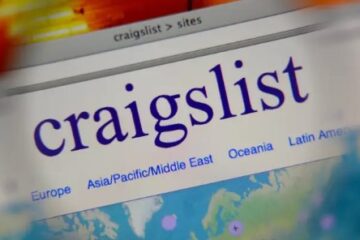In such a rapidly changing world, it is quite essential for the economy that small and medium-sized enterprises (SMEs) exist. They represent the majority of businesses across the globe; they are responsible for providing millions of jobs. Yet, as the issue of climate change and depleted resources creeps closer to home, profit-making can no longer be their sole consideration. ‘‘Green’’ SMEs are businesses that develop ‘‘green’’ products and/or carry out ‘‘green’’ practices and thereby help further improve the environmental performance of other business sectors and society in general.
Sustainability is the use of resources in such a way that it does not harm the future. For SMEs, this may include going green through the implementation of clean energy and environmentally friendly operations that minimize waste production. It also includes monitoring the carbon footprint of the business in terms of harmful gases it releases into the air and receiving sustainability certifications as proof of commitment to these changes. In five years, more clients and regulatory bodies will be pressing for these changes. According to a recent report, 88% of small businesses now perceive sustainability as being critical for success.
This article looks at the justifications for SMEs to adopt these practices. Benefits, key steps, challenges, and real examples will be covered. “By the end you’ll see how little changes can mean big wins.” Let’s explore how to build a business that lasts.
Understanding Sustainability for SMEs
Sustainability is not something of a cute little trend for Small and Medium Enterprises (SMEs); it is business operation intelligence. It juggles three core aspects: the environment, the economy, and society. Environment sustainability concentrates on the preservation of nature, e.g., minimizing pollution. Economic sustainability makes sure the business remains profitable over time. Social sustainability is taking care of the workers and the communities.
It is best for small companies to take small steps at the outset. A concern for most SMEs is the cost, but the data shows that benefits are achieved quickly through green initiatives. For example, the energy bill can be reduced by up to 20% through eco-friendly operations. This helps you realize where more improvements can be made by, for instance, shifting from gas-powered trucks to electric ones. Sustainability certifications earn trust and hence makes it easier to win contracts.
Access to measurement procedures by the year 2025 will have become simplistic, just using tools like freeware online calculators. Subsequently, governments are offering grant provision for these transformations as well. SMEs realize the big picture, making it possible to turn challenges into opportunities. It’s all about creating lasting value rather than mere survival from day to day.
Benefits of Sustainable Practices
The benefits of adopting sustainable business practices are vast and go beyond “saving the planet” to include boosting a company’s bottom line and building a stronger brand. Here are some of them:
- Cost Savings: Energy-efficient lighting is among the green initiatives that help in reducing utility bills; an average annual saving of $500 among SMEs was reported from a study conducted just on switches to LED. Eco-friendly operations also cut waste by lowering fees for disposal.
- Customer Loyalty: The forecast for 2025 is that consumers will prefer brands that care about the environment. Companies that boast low carbon footprints witness 15% more repeat business on average. Having sustainability certifications displayed on packages will draw the eco-conscious buyer.
- Better Talent Attraction: Today’s youth want purpose in their job. SMEs that implement green initiatives report finding it easier to hire. Eco-friendly operations create a healthier workplace and drastically reduce sick days.
- Access to New Markets: Sustainable suppliers are favored by governments. Sustainability certifications can open up some major contracts. Reduction in the carbon footprint will help comply with world rules and avoid fines.
- Risk Reduction: Unprepared businesses are exposed to risk from weather events and issues in supplying them. Sustainable practices build resilience, including the use of various suppliers for eco-friendly materials.
These benefits are the reason why 2025 is the year of action for SMEs-where sustainability is not an add-on but a core strategy for growth.
Key Sustainable Practices for SMEs
Sustainability for small and medium-sized enterprises can be initiated through small, achievable steps. Emphasis may be placed on green initiatives, environmentally friendly operations, reduction of the carbon footprint, and sustainability certifications. Each subsequent step builds on the previous ones toward a complete plan.
Implementation of Green Initiatives
Green initiatives are really some simple actions that help the environment and, more importantly, save money. So for SMEs, they start tiny but have a big impact. And one very small step is switching to renewable energy—solar panels on the roof cut the dependency on fossil fuels and lower the bill over time.
Another essential green initiative is waste reduction. Companies can perform waste audits to determine what is going to landfills and set up recycling bins and compost food scraps. This is how many SMEs find that they reduce waste by 30%. Planting trees or local clean-up drives also counts as green initiatives and has a positive impact on the planet while also involving the employees.
By 2025, technology will make it easier for green initiatives to take place. There will be apps that keep a track of water use and instantly point out where the leaks are. Retail SMEs will incorporate reusable bags, therefore reducing their plastic waste. Remember, the best green initiatives are ones that are attached to your daily routines. You can start with one of them, like a paperless office, and build up from there. This kind of an approach makes it easy to manage and immediately see some quick wins.
Adopting Eco-Friendly Operations
Eco-friendly operations are to run the business with minimal harm to nature. This includes supply chains to daily tasks for SMEs. Choose suppliers that use sustainable materials, e.g., recycled paper or organic cotton. This will reduce the overall impact.
In cafes and shops, reducing waste lighting and the use of smart thermostats such as turning off lights are among the small ways energy efficiency in offices waste and happier customers from cafes and shops are better at energy efficiency in offices turning off lights and using smart thermostats. Packaging is a big area for eco-friendly operations, as switching to biodegradable options or bulk shipping can eliminate boxes. There is less waste from cafes and shops, which leads to happier customers. Energy efficiency in offices helps too. It’s easy to turn off lights and use a smart thermostat.
Employee engagement drives environmentally friendly operations. Employees should be trained in resource-saving techniques, such as the use of double-sided printing. Remote work reduces the emissions due to traveling. In manufacturing, SMEs can upgrade their machines to run cleanly. Data from the year 2025 shows that these changes will lead to an annual saving of 10-15% in costs.
Track your progress with very simple logs. Eco-friendly operations build a culture of care, making the business that much stronger. It’s about smart choices that fit every budget.
Reducing Your Carbon Footprint
The carbon footprint is a measure of greenhouse gas emissions of business activities. Energy, travel, and supplies make up the bulk of small and medium-sized enterprise footprints. To start with, you calculate it using free tools that input data on electricity and miles driven.
Reduce the carbon footprint by switching to green power. Most utilities offer renewable plans at not much extra cost. Optimize routes for deliveries; this will save on fuel. Service SMEs can encourage employees to bike or carpool.
Offset hard-to-cut emissions by buying credits funding tree planting. In 2025, apps will make this very simple. Efficiency has definitely got to come from appliances—LEDs, low flow, and everything add up.
Regular checks keep the carbon footprint low. Share results with teams for buy-in, and SMEs that act now are not taxed when the future tax regime is based on emissions, lowering it will cut costs by 20% in energy alone.
Pursuing Sustainability Certifications
Sustainability certifications assure that a company complies with very stringent standards. These are badges of trust for SMEs. The popular ones include B Corp to show overall impact and ISO 14001 for environment management.
To start with, it is self-assessment regarding green activities or environmentally friendly operations. Identify gaps in green initiatives or environmentally friendly operations, and fix them. It is as simple as ENERGY STAR for buildings regarding offices. They are costly, but after all, this is the kind of investment small firms make.
Benefits include marketing to investors; the sustainability certifications are attractive to the large companies so they can win tenders from these companies in their supply chains.
Renewal keeps the schemes alive. More certificates will be about monitoring carbon footprints in 2025. SMEs should choose ones proportional to their size – like ‘Fair trade’ for products. These are steps that will build credibility and open doors.
Challenges and Solutions for SMEs
Despite the visible benefits, SMEs face hurdles, but solutions exist to overcome them. These include:
- High Upfront Costs: Such as solar, which require a financial outlay initially. Solution: There are low-interest financing options or government rebates that can be considered. Start small and you can recoup the investment quickly.
- Lack of Information: Most managers do not know how to start ‘going green’. Solution: Join free webinars or local networks. The SME Climate Hub, for example, has guides.
- Measuring Impact: Keeping tabs on the carbon footprint might appear complex. Solution: Implement intuitive applications—no expertise required. As and when required, engage consultants for one-time systematic assistance.
- Supply Chain Challenges: Building sustainable sources is not an easy and quick process. Solution: Build the lists gradually and visibly articulate your needs.
- Certification Hindrances: Many are scared by the documents needed for a sustainability certification. Solution: Employ cheap advisors or apply models. The investment shall bear fruit in future returns.
Thus, SMEs turn limitations into strengths. Just that little patience and planning smoothens the way.
A Quick Comparison of Sustainable Practices
To facilitate the selection of practices, a table detailing the main alternatives for SMEs is provided. It includes ease of implementation, cost, and impact.
| Practice | Ease of Start (1-5) | Initial Cost | Environmental Impact | Example Benefit |
| Green Initiatives – Recycling | 5 (Very Easy) | Low ($100-500) | High (Reduces Waste) | Saves $200/year on disposal |
| Eco-Friendly Operations – LED Lights | 4 | $500-2,000 | Medium (Energy Savings) | Cuts bills by 15% |
| Carbon Footprint Offsets – Offsets | 3 | Low ($200-1,000) | High (Lowers Emissions) | Meets regulations, no fines |
| Sustainability Certifications B Corp – Overall Proof | 2 | High ($1,000-5,000) | High (Overall Proof) | 10-20% more in sales |
Table renewables balance cost and impact well for starters. Pick based on your business type.
Real-World Examples of Success
A small clothing brand in the US embraced eco-friendly operations through the use of recycled fabrics and ethical factories that earned them a Fair Trade sustainability certification. The export markets were opened, and revenue grew by 30%.
An Australian tech firm has focused on reducing carbon footprints through being remote twice a week and using cloud servers. This has brought costs down by 12%, gaining ENERGY STAR sustainability certification and winning green awards.
These stories show SME success. In 2025, there are more that have followed suit, proving that it works at any scale. Learn from them — adapt to your needs.
Conclusion
The journey begins with awareness and small actions. The benefits in terms of savings and loyalty far outweigh the challenges. As one report put it, “businesses that act now are leading the economy of tomorrow.”




